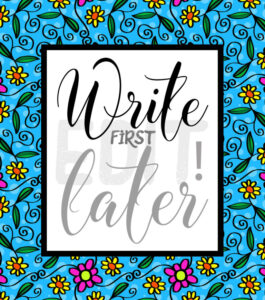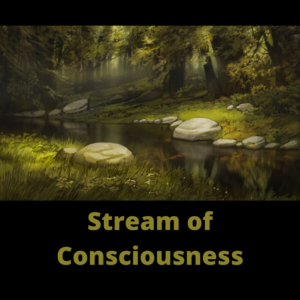
Write in A Stream of Consciousness to Hush Your Self-Editor
Something about writing seems to intimidate and/or frighten many people. Writing in a Stream of Consciousness can help get you past that fear of writing.
What Is Writing in A Stream of Consciousness?
- Writing in a Stream of Consciousness is a Type of Free Writing.
- Writing in a Stream of Consciousness is a Type of Quick, Flash Writing.
- After you Begin Writing in a Stream of Consciousness, You Do Not Stop to Check Your Grammar, Your Punctuation, Your Spelling, or Anything Else. You Just Start Writing and See Where Your Words Take You. You Simply Plow Through to the End.
- When You Remove all your Editing and Other Gags, Your Mind Will Expand Thoughts that you never knew you had will come to you via your Intuition.
“Stream of consciousness is a narrative style that tries to capture a character’s thought process in a realistic way. It’s an interior monologue, but it’s also more than that. Because it’s mimicking the non-linear way our brains work, stream-of-consciousness narration includes a lot of free association, looping repetitions, sensory observation….It’s meant to feel like you have dipped into the stream of the character’s consciousness—or like you’re a fly on the wall of their mind.
“Authors who use this technique are aiming for emotional and psychological truth: they want to show a snapshot of how the brain actually moves from one place to the next. Thought isn’t linear, these authors point out; we don’t really think in logical, well-organized, or even complete sentences.” https://liberalarts.oregonstate.edu/wlf/what-stream-consciousness
I’ll correct the above passage by saying that for some people, thought IS linear, but it’s not for me, and I know that it is not for many other people, too. I am adding the writing in a stream of consciousness so that the non-linear minds can write in a way that will work better for them. The logical thinkers will still have plenty of time to perform in the steps that follow. With this approach, everyone gets a fair chance to perform well.
Writing in a Stream of Consciousness Is A Way to Prime Your Writing Pump
How to Prime Your Writing Pump
1. Ask yourself what you are passionate about. Start there!
If you are writing an essay and/or writing in response to a prompt, ask yourself what most interests you about that prompt. Initially, you might not be able to identify anything that interests you about that prompt. Keep digging. If necessary, jump to the next step.
2. Overcome Lethargy
Lethargy is a type of drowsiness. When we are lethargic, we lack the motivation and energy to move forward.
Perhaps you feel that you are sinking in the quicksand of your own lethargy. Writing in a Stream of Consciousness approaches writing in a Just-Do-It fashion.

Just jump in–and start writing–don’t worry about how–just do it.
3. Write First – Title Later
When I begin writing a piece, I refrain from titling it too early. In fact, I do not title anything until I finish writing the first draft entirely
.Titling is a Writing-Stopper. A title is like a straight jacket. If you try to title first, you limit yourself because you write trying to write to fit the title. During the Stream of Consciousness phase of your project, just write, and allow the title to spring from the writing. We’ll tighten up later, but writing in a stream of consciousness is a way to explore what’s in your mind. Begin to say what you want to say–what pops out of your mind, and allow your writing to evolve. Then title.
4. Allow Your Intuition to Do the Heavy Lifting of Your Writing

Michelangelo was a famous artist during the Italian Renaissance. He was commissioned by Pope Julius II to paint the ceiling of the Sistine Chapel between the years 1508 and 1512.
“The Sistine Chapel … is a chapel in the Apostolic Palace, in Vatican City and the official residence of the pope. ” Wikipedia
The Creation of Adam is one of the frescoes that Michelangelo painted on the ceiling of the Sistine Chapel.
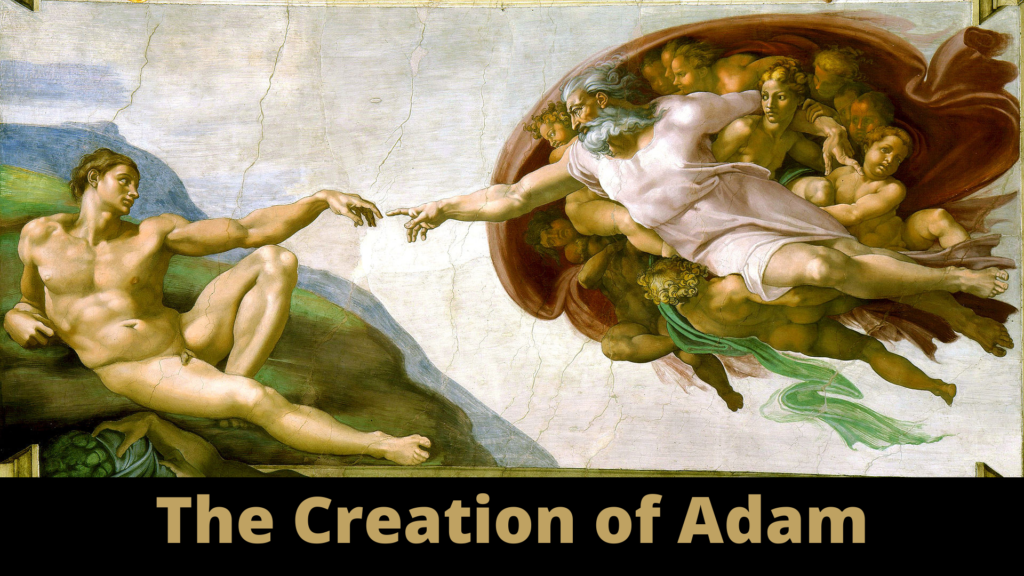
The Creation of Adam focuses on the power of God which is so very strong that it was not necessary for the fingers of Adam and God to touch the fingers of God. The power of God was strong enough to reach across the gap between the fingers of God and man. And still, God created man.
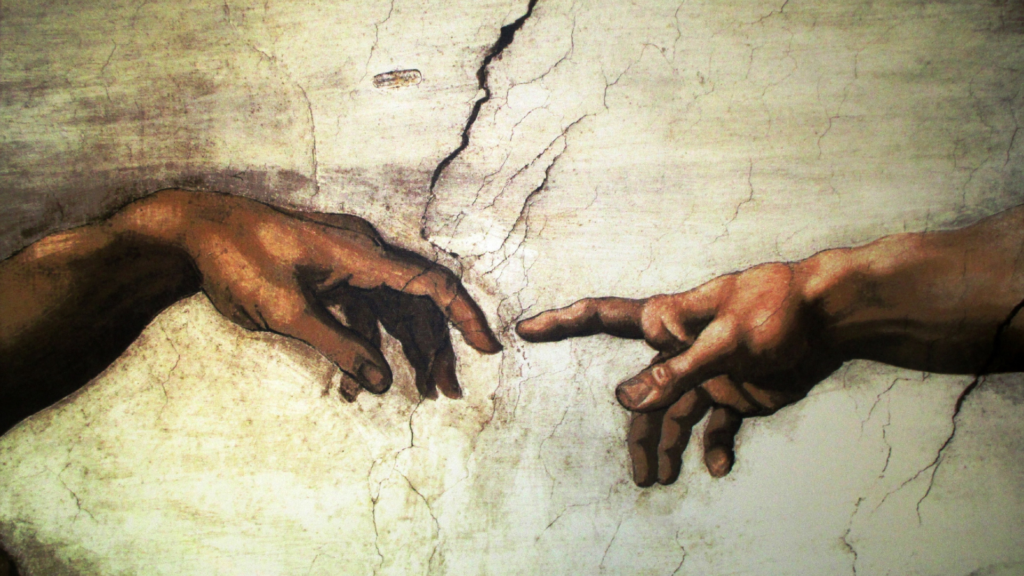
On a smaller scale, intuition is a power similar to that energy that flowed across the gap between God and man.
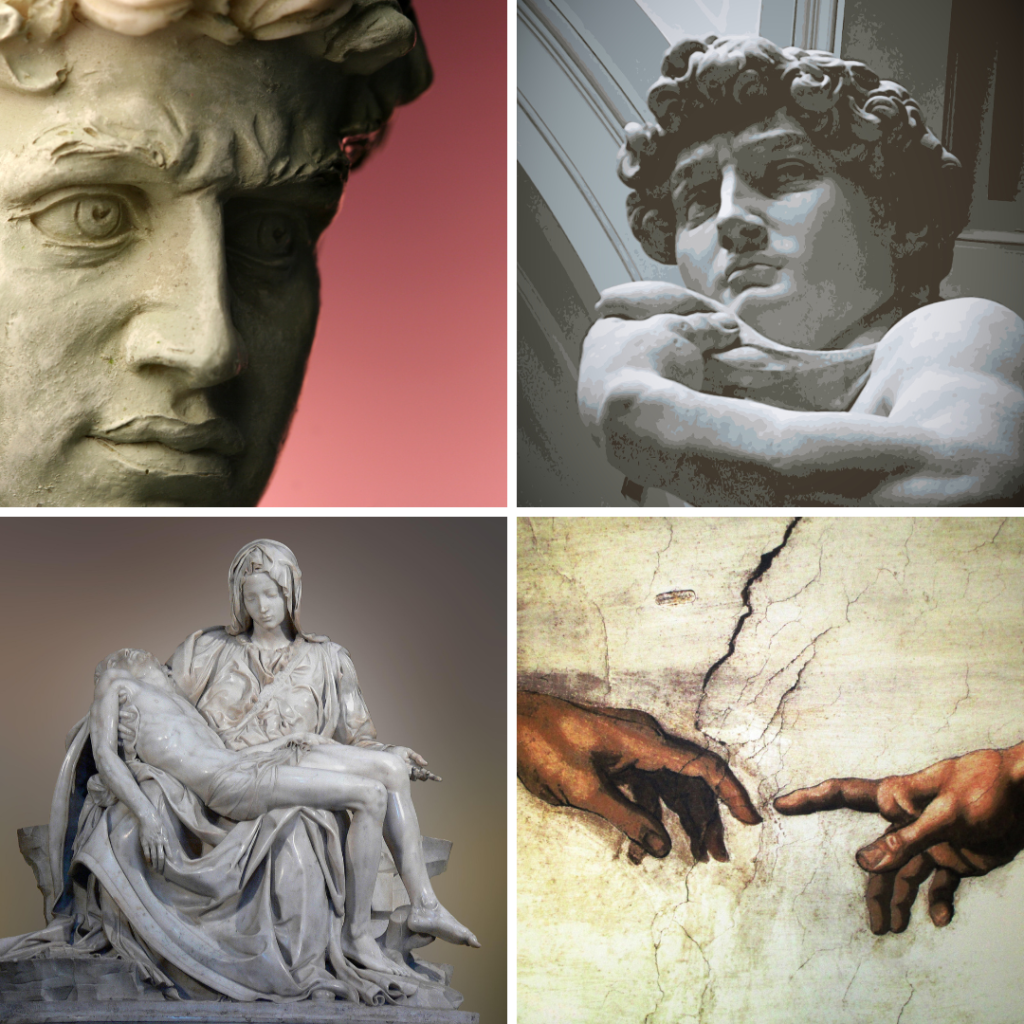
Michelangelo was both a painter and a sculptor. He alluded to the artist’s intuition in saying that his sculptures lay within the stone and in sculpting, he merely followed the path that he sensed within the rock.
“I saw the angel in the marble and carved
until I set him free”
– Michelangelo –
In the above words, Michelangelo was talking about the process of allowing his intuition to speak to him and to coach him as he created, thus creating his art for him. I cannot overemphasize the importance of intuition in any type of art form. Countless artists and painters speak of an intuitive force that operates within them when they create. Everyone is born with intuition, but socializing and educating a child have a way of squeezing the intuition out of him. Although it would be better if none of us ever lost our inner radar, intuitiveness can be reawakened.
In creating art, something [from somewhere?] speaks to the artist and that something should be allowed to lead the way. By listening to that something–that inner voice–one is able to distill one’s own vision. This is the way that Intuition works.
Intense listening with one’s inner ear–the intuitive ear– is a vital part of sharpening one’s inner eye—and thus, of extracting a piece’s inward significance. Intuition is the instinctive way that one’s inner artist views and responds to life. When a painter or a writer allows intuition to guide him, the painter or writer becomes a vessel. The art flows through that vessel.
Songwriters often harness intuition, too. David Foster wrote the song “The Prayer.” In the following video, He talks about how his intuition wrote that incredible song THROUGH him.:
“…all of those melodies are swirling around in the universe, and the best songs come through you and not from you….The song comes when the feeling can’t be said without it.” – David Foster, Composer
Knowing why one does this or that while creating is not important–just doing it is the key to creating. Making any kind of art is an intuitive response. When we write ANY thing–even if it is an essay for a class–we are making art.
When writers can access the words that lie within themselves, they begin to write more authentically. When writers create from within their own intuitions, they often call that writing from “The Zone,” but it is actually writing from within intuition, which is a reservoir of thoughts and emotions that run deeply within each person. The secret is tapping into that reservoir. Beginning a writing project in a stream of consciousness is a method that helps a persons tap into his own reservoir.
5. Don’t Worry About What Everyone Else Is Thinking about Your Writing

“You wouldn’t worry so much about what others think of you if you realized how seldom they do.” – Eleanor Roosevelt
Other people aren’t focusing on you. Quit worrying about what other people might be thinking about you and what you are writing. Just focus on yourself and your own goals and begin to write. Remember that you are writing to express yourself–not to express everyone else.
6. Write Naturally – Give Up the Idea that You Should Write Like Shakespeare
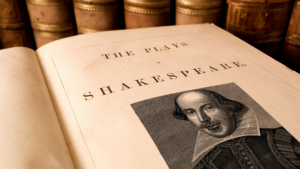
Just talk–Write in plain language [Shakespearean English is out].
Please Don’t Thee and Thou Me
by Jacki Kellum
Please don’t Thee and Thou me.
That’s such a stuffy start.
That’s not the way to wow me,
Just say it from your heart.
©Jacki Kellum February 3, 2016
Jacki Kellum Rules for Writing – Rule Number 1
Don’t try to use stilted, pretentious, poetry-sounding words. Just talk.
7. Write First – Edit Later Turn Off Your Self-Editor
Write first. Let it flow. Just talk. Spell later. As you begin to write your first draft, don’t worry about spell check and grammar at first. Getting stumped by spelling and grammar is another Writing-Stopper. Write first–then check your spelling and grammar. Then edit. Whatever it takes, do it, but don’t let your editing strangle your writing.
8. Consider Recording Your Writing and Then Transcribing It
If you cannot keep your self-editor in check, allow your cell phone‘s voice recorder to help you. Just pick up your cell phone and download a voice recorder app and talk to the recorder. You can even send yourself lengthy voice messages and transcribe those. A friend of mine had a great idea for this. She said to send your message to yourself via email, and it will already be typed for you. How easy is that?
